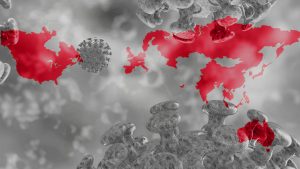
[Reprinted: The Lancet, 5-15-2020]
Among all the reports, modelling, and desktop exercises in the past decade devoted to preparing for the next pandemic, when COVID-19 spread worldwide, some of the consequences had surely never been predicted. Scientists who were barely known outside a narrow academic circle are now household names, lauded and vilified in turn in the press and on social media. Twitter subscribers who until a few months ago were apparently experts in European relations or constitutional law are now skilled infectious diseases epidemiologists. The accretion of new knowledge takes place via tweets, political grandstanding, gross misinterpretation of preprints, and media briefings in the absence of scrutinisable data. We are witness to the unedifying spectacle of highly respected scientists left squirming as they are subject to the dangerous ramblings of politicians desperate to rescue themselves from their own incompetence. Politically inspired crank conspiracy theories abound as to the origin of severe acute respiratory syndrome coronavirus 2 (SARS-CoV-2). Perhaps more predictably, the steps taken by national governments to mitigate COVID-19 are simultaneously criticised as under-reactions and over-reactions. And as these policies have their desired effect, the premature clamour for a “return to normal” grows ever louder.
Whereas policy decisions in response to COVID-19 are labelled as being “guided by the science”, there are many aspects of this disease that affect policy where scientific consensus has yet to form. For example, there has been much discussion of whether immunity from natural infection will protect against repeat infections. Experience with other coronaviruses suggests that although protective immunity does develop, it also wanes. If true for SARS-CoV-2, the effect on policy around so-called “immunity passports” is unclear. At the very least, people who can go about their business because of their immune status will need to be retested frequently.
The value of wearing face masks remains unclear in our view. As part of the relaxing of physical distancing restrictions, governments are recommending face covering while on public transport or shopping. Given that we can be confident that domestic and workplace settings are more likely venues for virus transmission than travel or casual urban contact, then, logically, advice to wear facial covering while travelling to work should extend to the workplace itself.
Many governments have implemented school closures as part of the pandemic response. The contribution of this measure to transmission control relative to other policies is fiercely disputed. Staged, carefully monitored reopening of schools might be necessary to gather information to guide long-term policy.
What was predicted from previous outbreaks is the effect that the response to COVID-19 is having on management of other diseases. In our May issue, we reported that the pandemic has disrupted both routine and mass vaccination campaigns in some low-income and middle-income countries, and the same is now happening with infant immunisation in the USA and the UK. A recent report estimates that compared with a scenario of no pandemic, the demands that the COVID-19 response puts on health systems will increase deaths by up to 10% for HIV, 20% for tuberculosis, and 36% for malaria over 5 years in high-burden settings. The pandemic response is already affecting care for non-communicable diseases, and the resultant economic downturn will have chronic long-term health effects, with mental health perhaps worst affected.
Policy responses must account for scientific uncertainties, while at the same time balancing the demands that COVID-19 puts on health-care resources with the long-term economic and health effects of pandemic control measures. Among industrialised, densely populated countries, Germany and South Korea in particular have been praised for their responses to COVID-19, which have been based on widespread testing, contact tracing, and isolation. But the virus has not gone away in these places—there are worrying signs of an increase in cases as restrictions are eased. The percentage of the global population that is immune from exposure to the disease is probably still in single figures; future outbreaks are almost inevitable.
A reshaping of policy is required that accounts for a reluctantly forming consensus: that we must plan for COVID-19 over years rather than months. Even with an effective vaccine in the next year, global roll-out will take at least as long again. Policies must be internationally coordinated, as WHO has called for since the disease first appeared, and must recognise that neither abandoning control nor eternal lockdown are healthy options.